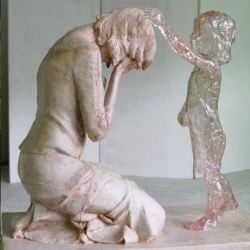
The emotional agony of losing a baby in utero can only be understood by the people that have experienced it. To the rest of us, it is unimaginable.
But, what I can imagine, after that kind of tragedy, is wanting to know what happened - to have a reason.
Unfortunately, more times than not, a reason is not provided after a stillbirth. A new study delved into a massive amount of data surrounding a large number of stillbirths in order to learn more about the methods that are used to determine their causes of death. A team from The Great Ormond Street Hospital in London, England published a series of six papers in a single journal of Ultrasound in Obstetrics and Gynecology analyzing different aspects of the post mortem process that occurs after a stillbirth, trying to uncouple the effective from the ineffective, in regards to determination of death.
Intrauterine fetal deaths (IUFD) are categorized as early (< 20 weeks), late (20-23 weeks) or stillbirth (>24 weeks.) In the UK, roughly four in every 1000 births are stillbirth.
For the study, the group analyzed the information from 1064 intrauterine deaths - 246 early, 179 late and 639 stillbirths. Roughly 40% (n = 412) had a clear cause of death leaving 60% ‘unexplained.'
The data presented in the papers are a call to action of sorts - to shift how we think about the ways that stillbirths are treated post mortem, and the effectiveness of the analysis done. They pokes holes in the current post mortem process - much of which does not yield information regarding the cause of death.
The study analyzed the different processes of autopsy, microscopic analysis of tissue samples, placental examination and clinical review of case notes. They found that, although clinical review and placental review determined the cause of death roughly 20% of the time, autopsy revealed a cause of death in only a small percentage of cases.
But, the bottom line is that the best that any of the available techniques did was 20% - and 60% of stillbirths are left unexplained. This highlights the need for better, more refined, techniques for investigating and determining a cause of death.
Another important finding to come out of this study is that birth weight should not be as heavily relied upon as an indicator of stillbirth. Currently, smaller babies may be birthed electively due a seemingly heightened risk of stillbirth. And, although small babies are at a greater risk of stillbirth, this study calls into question using weight as an indicator of stillbirth as it shows that the death of babies in utero may have occurred when the fetus was at an average size and weight, but that the weight gain ceased after death, resulting in a small baby.
The Chief Executive of Sands, the organization who funded the study (2), Dr. Clea Harmer, is quoted as saying “When a baby dies before birth, the most pressing question for parents is why? This study reveals how much we can expect to learn from the way post mortems are done today and highlights just how many gaps there are in our knowledge. These gaps won’t close without continued and expanded funding for research, and access to good-quality pathology services for all parents when their baby dies."
Continued research and the development of better methods will not only give the parents who just lost their child the only piece of information that may bring them a slight shred of comfort, and will increase our understanding of stillbirths and, ultimately, work to prevent this tragedy from happening in the first place.
Notes:
1. Photo credit - Sculpture - The Child Who Was Never Born by Martin Hudacek
2. This study was supported by the Sands (stillbirth and neonatal death charity) organization - founded in 1978 by a small group of bereaved parents who were devastated by the death of their babies. More info. about Sands can be found on their website at www.uk-sands.org
